07 Jul 2014
Are Binge Drinkers Addicted To Alcohol?
Binge drinking is a term used to describe heavy drinking. According to the National Institute on Alcohol Abuse and Alcoholism (NIAAA), binge drinking means having enough drinks in a two hour period to achieve a blood alcohol concentration level of 0.08, a level at which a person is considered to be intoxicated. Binge drinking is increasingly common, but does it make a person an alcoholic or addicted to alcohol? The answer is not so simple.
The Risks Of Binge Drinking
For women, binge drinking typically means having four or more drinks in a two-hour period. For men, it means having five or more drinks. Consuming this much alcohol in one sitting, or more, is detrimental to your health. And if you drink this way, you are not alone. One in every six adults in the U.S. binges four times a month. Each binge includes eight drinks on average. This is a lot of alcohol.
Binge drinking can lead to a number of health problems, not least of which is dependence on alcohol, or alcoholism. It can also cause:
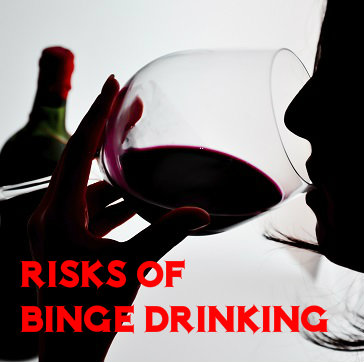 liver disease
liver disease- high blood pressure
- heart attack
- stroke
- neurological damage
- complications if you have diabetes
Binge drinking also leads to:
- accidents and injuries
- alcohol poisoning
- fetal alcohol syndrome
- unintended pregnancies
- problems with relationships
- strain on career and finances
What Is Alcoholism?
So does binge drinking make you an alcoholic? Not necessarily. Addictive disorders are most often diagnosed based on the Diagnostic and Statistical Manual of Mental Disorders. The fifth version of this manual recently came out with new criteria for alcohol addiction. The fourth edition listed alcohol abuse and alcohol dependence (alcoholism) as two separate disorders. The fifth edition merged the two into one disorder: alcohol use disorder. A person can be diagnosed as having a mild, moderate or severe case of alcohol use disorder.
According to the fifth edition, to have an alcohol use disorder you must have two of the eleven symptoms listed in the manual. Having two or three symptoms represents a mild case. Binge drinking is not listed as a symptom, but several of the symptoms could result from binge drinking. For instance, one symptom is drinking more than you intended to on a particular occasion. Many binge drinkers could claim doing this. Another symptom is trying to drink less, but failing. Again, this can happen with binge drinking.
There are several other symptoms that could go hand-in-hand with binge drinking. This means that if you binge drink and end up having two of these symptoms, you could be diagnosed as having mild alcohol use disorder. If the risks of binge drinking are not enough to make you want to slow down, maybe this fact is.
Stopping Binge Drinking
Moderate drinking is not harmful to your health, unless you have specific conditions that are exacerbated by alcohol. If you binge drink regularly, consider cutting back to moderate drinking levels. If you don’t, you put yourself at risk for a number of health problems. Not least of these is alcohol use disorder. If you could qualify for a diagnosis of mild now, you are on the path to having moderate or severe alcohol use disorder later.
Being a moderate drinker means having no more than three drinks per day and seven per week if you are a woman. If you are a man, have no more than four drinks per day and 14 in a week. Cutting back is important for your health, but if you find you can’t, you may need to get help. Rely on friends and family to support you in drinking less, or find a support group to join. You don’t need to be a full-blown alcoholic to ask for help. Doing so now could save you disastrous consequences in the future.
If You Or Someone You Love Needs Help Quitting Drinking – Call Us Now – We Will Get You On The Path To Happy And Healthy Sobriety!
Depression can be a very serious mental health condition. People struggle with depression to varying degrees. For some it is a lifelong battle, while for others it comes on as the result of life situations but is temporary. In any type of depression, self-medication is common but ill advised. Self-medication is the use of drugs or alcohol to mitigate symptoms. It is a dangerous and destructive practice, but not everyone who does it realizes the harm they are causing. If you or someone you love struggles with depression, look out for and avoid self-medicating.
Depression And Substance Abuse
Self-medicating is particularly common for depression. It mostly occurs in people who have not been diagnosed and are not getting professional treatment for depression. If you feel depressed, it is natural to turn to something that will either make you feel better, or that will at least numb that bad feeling. Most people reach for alcohol, but prescription drugs and illegal drugs are used as well for the self-medication of depression. The rates of substance abuse among people with either depression or anxiety are as high as 20 percent.
The Dangers Of Self-Medicating
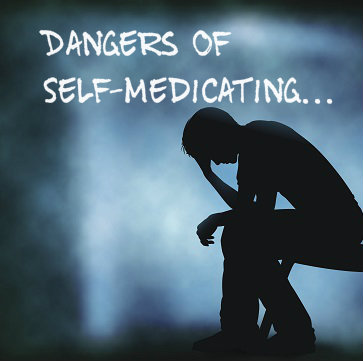 Self-medicating feelings of depression often work in the short term. It’s why so many people resort to it as a strategy for feeling better. Over a long period of time, however, doing so only causes more problems. Not least of these problems is the possibility of addiction. A dual diagnosis of depression and addiction is not uncommon. Relying on alcohol or drugs to make you feel better is a habit that leads to dependence. Your body will get used to the substance and you will find it difficult to quit.
Self-medicating feelings of depression often work in the short term. It’s why so many people resort to it as a strategy for feeling better. Over a long period of time, however, doing so only causes more problems. Not least of these problems is the possibility of addiction. A dual diagnosis of depression and addiction is not uncommon. Relying on alcohol or drugs to make you feel better is a habit that leads to dependence. Your body will get used to the substance and you will find it difficult to quit.
Another problem with self-medicating is that it never allows you to confront and deal with your depression. Drinking or using drugs is like a quick fix, but one that doesn’t last. It is not a permanent solution to your problems. Only treatment by health care professionals using therapy in combination with appropriate medication will provide you with lasting relief. In fact, research into teenage depression has found that self-medication can actually make a mental illness more serious.
How Can I Tell If Someone Is Self-Medicating?
If you’re worried that someone you care about may be struggling with depression and is self-medicating, act immediately. Be there for your loved one and offer your help. People often don’t realize that they are depressed. It is usually easier for others to see the signs.
First look for signs of depression:
- Feelings of hopelessness or loneliness
- Apathy
- Changes in sleeping habits
- Weight loss or gain
- Irritability or irrational anger
- Difficulty concentrating
- Reckless behaviors
- Unexplained aches and pains
If, in addition to seeing these signs in someone, you also see them using drugs or alcohol frequently or to excess, he or she is probably self-medicating for depression. Your loved one may try to hide drug use or drinking, which is another clear sign. Confront this person as soon as you can, but do so in a loving and compassionate manner and offer your help.
Depression is a complex mental illness. It afflicts many people, who often turn to substances for relief. Instead of drugging the problem, get help for yourself or your loved one. The care and treatment given by professionals is the right solution to coping with and living with depression. Self-medicating may feel right initially, but the good feeling won’t last. It will only make the condition and symptoms worse.
Learn More About Dual Diagnosis
If You Or Someone You Love Is Struggling With Mental Illness and/or Addiction – Call Us Now To Speak To A Recovery Advisor! We Are Here To Help!
People who experience serious problems with the non-addicted abuse of stimulant drugs (e.g., amphetamine, cocaine and methamphetamine) and people addicted to stimulant drugs typically qualify for a diagnosis called stimulant use disorder. After entering treatment for their problems, some individuals with this disorder successfully remain abstinent from stimulant use, while others relapse back into active stimulant intake.
In a study published in June 2014 in the journal Drug and Alcohol Dependence, researchers from a U.S. university and two private institutions compared the brain functions of people with stimulant use disorder who remain abstinent to the brain functions of people with the disorder who relapse.
Stimulant Use Disorder
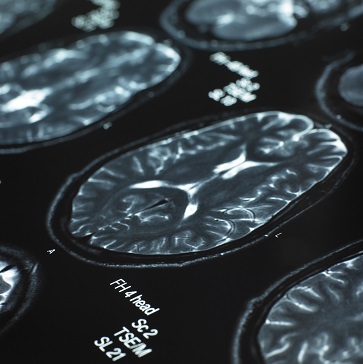 Stimulants are powerful substances that substantially speed up activity in the nerve cells that power the central nervous system (spinal cord and brain), and thereby trigger a speedup in key body functions such as the baseline heart rate and breathing rate. The brain changes associated with stimulant use include the onset of an intense sensation called euphoria, which emanates from a part of the brain commonly referred to as the pleasure center.
Stimulants are powerful substances that substantially speed up activity in the nerve cells that power the central nervous system (spinal cord and brain), and thereby trigger a speedup in key body functions such as the baseline heart rate and breathing rate. The brain changes associated with stimulant use include the onset of an intense sensation called euphoria, which emanates from a part of the brain commonly referred to as the pleasure center.
Some stimulant users become involved in a pattern of abuse when they try to recreate euphoric feelings in their pleasure centers, while others establish a pattern of abuse based on a misguided desire to do such things as increase alertness or improve academic performance.
Over time, habitual stimulant abusers may become stimulant addicts when their brains undergo long-term changes that produce physical dependence, as well recurring drug cravings, loss of control over stimulant intake or a number of other potential symptoms.
The stimulant use disorder diagnosis applies to non-addicted abusers who fall into a dysfunctional pattern of stimulant-related behavior, as well as to people affected by physical stimulant dependence and addiction. The American Psychiatric Association officially established this diagnosis in 2013 as a specific form of a larger illness classification called substance use disorder. Stimulant use disorder replaces independent diagnoses for both stimulant abuse and stimulant addiction. This replacement occurred because current evidence strongly supports a high degree of overlap for symptoms of abuse and addiction in affected stimulant users.
Stimulant Relapse
People in treatment for stimulant abuse/addiction need time to detoxify from active drug use and recover from the long-term changes in their normal brain function. A chief obstacle to this process is the continuing presence of strong urges to consume more of a given stimulant. Typically, these urges are intensified by cues in the everyday environment that recovering stimulant users have previously learned to associate with drug intake. Even in people who ultimately recover and establish a long-term abstinent lifestyle, the persistence of drug-using urges can trigger a relapse either during or after treatment. Relapses are a fairly common occurrence, and addiction specialists typically take them into account when devising treatment strategies for their patients/clients.
Are There Brain Differences In Those Who Relapse On Stimulants?
Researchers from the University of Minnesota, the Hazelden Foundation and a private psychiatric practice used modern imaging technology to compare the brain functions of people who relapse back into stimulant use during or after treatment to the brain functions of people who avoid stimulant use during or after treatment. All told, 18 people diagnosed with substance use disorder took part in the study, as did a second group of 15 people not affected by any form of substance abuse. The researchers performed two sets of brain scans on all of these individuals, and followed up half a year later to see which stimulant users had relapsed back into drug use.
With the advantage of hindsight, the researchers concluded that, at the initial bran scan, the participants who eventually relapsed had far more profound changes in the function of parts of the brain responsible for the critical tasks of maintaining emotional control and regulating levels of pleasure and reward. The participants who relapsed also gradually developed a reduced level of activity in these brain areas in the early stages of their recovery.
The study’s authors believe that the decline in brain function found in the participants who ultimately relapsed back into drug use may serve generally as a physical sign of heightened risks for relapse in recovering stimulant users.
Call Us Now If You Or A Loved One Is Struggling With Addiction Or Has Relapsed. Help Is Just A Phone Call Away!
24 Jun 2014
The Truth About Synthetic Marijuana
Synthetic marijuana dangers are very real and very serious. Although law enforcement has been able to crack down on much of the product, and policy makers have enacted laws to cut back on it, synthetic marijuana is still floating around on the illicit drug market. Many people believe that marijuana is a low-risk drug, especially as attitudes and laws regarding it begin to change. The real drug has its risks and harms, and so does the synthetic version. The truth behind this drug substitute is that it can cause real harm and can lead to addiction.
How Does Synthetic Marijuana Differ From The Real Thing?
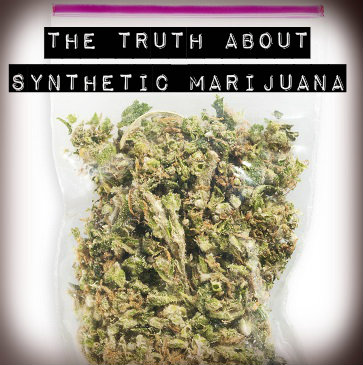 Real marijuana is the dried leaves, stems and seeds of a plant called cannabis. The plant contains psychoactive compounds called cannabinoids. Manufacturers of synthetic marijuana attempt to create compounds in a laboratory that are similar enough to the natural cannabinoids to give users the same high as the natural product. There are thousands of natural compounds and even more possibilities for synthetic alternatives. Most synthetic products consist of some type of dried plant material sprayed with a liquid containing the lab-made compounds.
Real marijuana is the dried leaves, stems and seeds of a plant called cannabis. The plant contains psychoactive compounds called cannabinoids. Manufacturers of synthetic marijuana attempt to create compounds in a laboratory that are similar enough to the natural cannabinoids to give users the same high as the natural product. There are thousands of natural compounds and even more possibilities for synthetic alternatives. Most synthetic products consist of some type of dried plant material sprayed with a liquid containing the lab-made compounds.
What Are The Health Effects Of Synthetic Marijuana?
When smoked, many of these synthetic products have a similar effect as natural marijuana. They can cause sleepiness and a pleasant sense of relaxation and happiness. Smoking real marijuana poses certain health risks, including aggravating or contributing to lung conditions. The synthetic products can be even more harmful. The reason for this is that the makers do not list everything that comes in their product. There could be any number of dangerous chemicals in it and not knowing what you are smoking is very risky.
Users have reported:
- panic attacks
- dizziness
- hallucinations
- shaking
- paranoia
- anxiety
- hot flashes
- convulsions
- periods of emotional instability
Is Synthetic Marijuana Addictive?
Marijuana is not one of the most addictive of all drugs, but it can be habit-forming, especially when used regularly and frequently. Users of synthetic products also report experiencing withdrawal and cravings when they try to stop. For this often-dubbed gateway drug, rehab is a solution to addiction. Even when an addiction is not full blown, it can be helpful to go through some kind of rehab.
A successful drug rehab program, whether for synthetic marijuana or the natural drug, is one that develops individualized treatment plans for each patient. It should be staffed by caring professionals who are experienced at working with addicts and qualified to do so. The plan should be adaptable to change with the needs of the patient.
Once you know the truth about synthetic marijuana, you will not be tempted to try this harmful drug. Its manufacturers and sellers have gone to great lengths to convince buyers that this product is mostly safe and carries a low risk. Don’t fall for the lies.
Find Out Why ER Visits For Synthetic Marijuana Are Likely To Rise
If You Or A Love One Is Struggling With Substance Abuse Or Addiction – Call Us Now – We Are Available 24/7

Every day in the U.S., 105 people die as a result of drug overdoses. Both prescription medications and illicit drugs are to blame, but regardless of the cause, taking steps to reduce the number of unnecessary deaths should be a priority for lawmakers across the country.
One common legal approach to the problem is a “Good Samaritan” law, which promises legal immunity for those who notify authorities of a drug overdose in progress.
Louisiana, despite recently passing a fairly extreme sentence for repeat heroin dealers, has become the 20th state to adopt such a law, and has thereby taken a decisive step in reducing the suffering caused by drug abuse.
Louisiana’s Good Samaritan Law
There were a few changes made to the new rules at the last minute. One of these was that the individual who calls for help will have to stay in the location, and must provide his or her full name to officials upon request.
Paramedics are also allowed to carry naloxone, an antidote to opiate overdose with the potential to save lives all around the country if made widely available.
Furthermore, in a reasonable caveat to the new rule, you can’t be granted immunity if you’re the person who administered the drug that led to the problem.
Although this restriction may still lead to people not calling for help if they’re at fault, it’s clear that people who administer dangerous doses of drugs in unknown circumstances should not be granted immunity without a thorough investigation of the circumstances.
Reporting OD’s And Fear Of Police Involvement
“Research shows that the most common [reason] people cite for not calling 911 is fear of police involvement,” said Louisiana Sen. Sharon Weston Broome. This goes to the heart of the problem the Good Samaritan law was designed to address: these people need urgent care, but the fear of legal consequences delays or even prevents people on the scene from calling 911. In this sense, the law makes it clear that the priority is saving lives, and should drastically increase the proportion of cases where paramedics are able to get on the scene in time.
Louisiana’s Less-Than-Progressive Drug Laws
It’s hard to see an issue with Good Samaritan laws, as long as you’re of the opinion that people struggling with addiction don’t deserve to die because of potential legal consequences, but not all of Louisiana’s rules are underpinned by this forward-thinking philosophy. A perfect example of the more extreme laws is one passed earlier in May that set the maximum sentence for repeat heroin dealers at 99 years. The original bill called only for doubling of the penalties from five years to 10, and critics of the new law have pointed out that murderers and rapists will be in jail for less time than someone caught dealing heroin twice.
The Good Samaritan law is a step in the right direction, but after taking such a monumental step backward with the punishment for heroin dealers, it’s hard to feel as though things are really getting better in Louisiana.
Drug Laws Should Always Focus On Saving Lives
The Good Samaritan law is an excellent example of the sort of drug laws we need. At its heart, it’s about saving lives. Much of the criticism of the ongoing war on drugs revolves around its focus on punishment rather than on providing help for those in need, and for the country as a whole, the increased number of Good Samaritan laws is an undeniably positive thing.
Recently, Georgia passed a similar version of the law, and it seems inevitable that more states will follow.
The Fix’s coverage of the story includes a poignant quote from Kathy Fletcher, a woman who accidently overdosed on prescription medication: “Naloxone saved my life. It should be available to the average citizen just like the EpiPen and glucagon because it’s just as safe, and the faster we get it to people, the more [lives] we save.”
Critics of naloxone and Good Samaritan laws in general may feel as though they’re a tacit approval of drug use, as if the law were saying, “it’s OK if you’re a drug user too, we’ll ignore it if somebody is in danger” or “don’t worry if you overdose, we’re making the cure more widely available so you can survive to nearly OD again.”
This is an oversimplified, easily refutable version of the actual reason for these types of rules.
The complex issue of addiction means that we can’t just lay the blame on the drug users, punish anybody trying to save their lives, and restrict access to a potentially life-saving medication.
Because people are trapped in the cycle of addiction, unable to break free no matter how hard they try, we can’t treat them like social pariahs when they’re more in need of help than ever before. We need to swallow our moral indignation and focus on helping thosein need.
Read Our Other Addiction News Posts
The similarity in names suggests that there is a fundamental similarity between amphetamine and methamphetamine. How are they different? How are they the same? While the drugs have the same chemical base, the process they undergo drastically alters the effect they have on the body. The methamphetamine vs. amphetamine question may be used to try to determine which is more harmful or which is more addictive. While the drugs bear similarities, their differences are significant. Read on to understand more about each.
Amphetamines
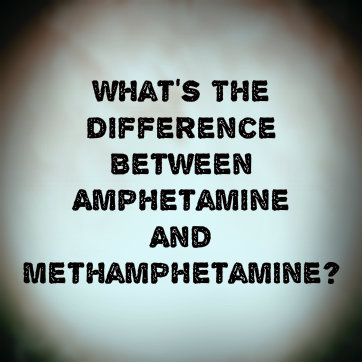 Amphetamine has a variety of medical uses and drugs containing amphetamines have been prescribed by physicians for a variety of conditions. For example, because amphetamines are powerful psychostimulants and increase metabolism, they have often been incorporated into prescription weight loss aids. Amphetamines also have the ability to increase focus and heighten mental clarity and thus have been prescribed to treat those struggling with attention-deficit hyperactivity disorder (ADHD) or to help soldiers stay awake during long stints in the field.
Amphetamine has a variety of medical uses and drugs containing amphetamines have been prescribed by physicians for a variety of conditions. For example, because amphetamines are powerful psychostimulants and increase metabolism, they have often been incorporated into prescription weight loss aids. Amphetamines also have the ability to increase focus and heighten mental clarity and thus have been prescribed to treat those struggling with attention-deficit hyperactivity disorder (ADHD) or to help soldiers stay awake during long stints in the field.
Methamphetamines
Methamphetamine is more commonly associated with illegal, recreational use and is never prescribed medically. Methamphetamine is amphetamine double methylated (amphetamine is methylated once). The science behind this may be complicated for the layperson, but the important thing to understand is that methamphetamine, because it has been methylated twice, is significantly faster acting, more potent, and more addictive, and thus quite a bit more dangerous.
The result of both is euphoria because of increased release of norepinephrine and dopamine in the brain. This release of pleasure chemicals stimulates the brain’s reward center, enticing the user to not only continue use, but, as tolerance develops, to crave ever increasing levels of the drug.
The effects of use are similar in both amphetamines and methamphetamines including increased pulse, hyperactivity, dizziness, and insomnia, but the effects are more potent with methamphetamines. When taken exactly as prescribed and under the careful monitoring of a physician, amphetamine usage can be safe. The same cannot be said of methamphetamines, for which experimentation can carry grave results.
Abuse Of Amphetamine And Methamphetamine
Though amphetamines may boast a variety of medical uses, the prescription drugs containing amphetamines still carry risk as well as unfavorable side effects. These drugs are highly addictive and carry significant potential for abuse.
While they have unique and distinct effects on the body, in both cases the body develops tolerance rapidly and more and more of the drug is required to achieve the desired results. Even if an individual does desire to stop taking the amphetamine-based prescription or to stop using meth, the physical dependence can throw the individual into severe withdrawal.
It is recommended that those intending to cease use of amphetamines or methamphetamines do so under the care and supervision of a doctor or with the assistance of a drug rehab program and related therapy.
So amphetamine vs. methamphetamine isn’t really the issue. Both drugs are potent and dangerous with the potential for abuse and addiction. While amphetamine may be used safely under the supervision of a physician, it still carries risk and should be taken with caution and care.
If You Or Someone You Know Is Struggling With An Addiction
Call Us Now – We Are Available 24/7
05 Jun 2014
How Can Marijuana Use Lead To Heart Disease?
The use of cannabis (marijuana, hashish and hashish oil) is linked to a range of potential health problems, including diagnosable abuse and/or addiction and increased odds of experiencing some of the psychosis-related symptoms associated with schizophrenia and certain other severe mental illnesses.
In a study published in April 2014 in the Journal of the American Heart Association, a team of French researchers investigated another possible consequence of cannabis use: dysfunction in the cardiovascular (heart and blood vessel) system. These researchers concluded that young adult cannabis users, in particular, put themselves at increased risk for potentially life-threatening cardiovascular problems.
Marijuana Use Stats
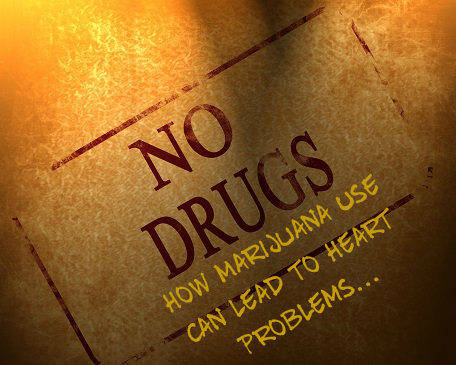 Cannabis use (particularly, marijuana use) is a relatively common form of recreational substance intake among U.S. adults and teenagers, according to figures compiled by the federal Substance Abuse and Mental Health Services Administration. In 2012 (the last year with fully available statistics), almost 19 million Americans over the age of 11 used marijuana in a given month; this number is the equivalent of more than 7 percent of the teen and adult population.
Cannabis use (particularly, marijuana use) is a relatively common form of recreational substance intake among U.S. adults and teenagers, according to figures compiled by the federal Substance Abuse and Mental Health Services Administration. In 2012 (the last year with fully available statistics), almost 19 million Americans over the age of 11 used marijuana in a given month; this number is the equivalent of more than 7 percent of the teen and adult population.
The highest rates of intake for marijuana and all other illegal or misused substances occur in teenagers and young adults between the ages of 16 and 34. Within this fairly broad age range, peak rates of use occur among individuals in their late teens or early 20s. Intake rates are lowest among very young adolescents and adults age 60 or older. Throughout the U.S., only alcohol and nicotine outrank marijuana as popular substances of abuse.
Cardiovascular Risks Associated With Marijuana Use
One of the most serious cardiovascular problems is acute coronary syndrome, a term that doctors use collectively to describe any condition that produces a rapid decrease in blood supplied to the tissues that make up the heart muscle. Well-known conditions that meet this definition include heart attack (loss of blood flow and tissue death in specific areas of the heart) and cardiac arrest (stoppage of all heart function). Acute coronary syndrome also includes a form of unpredictable chest pain called unstable angina.
In the study published in the Journal of the American Heart Association, researchers from four French institutions used information from an ongoing project called the French Addictovigilance Network to assess the cardiovascular risks faced by people who use marijuana or other forms of cannabis.
In France, this network acts as a national reporting system for all people seriously impacted by any type of substance abuse or substance addiction. The researchers looked at data gathered from 2006 to 2010. All told, 1,979 reports of serious cannabis-related harm were registered with the Addictovigilance Network during this timeframe.
The researchers found that cardiovascular problems accounted for just 1.8 percent of all cannabis-related harm. However, they also found that many of the reported cardiovascular problems were severe or potentially lethal in nature. For example, over half of the affected individuals suffered from acute coronary syndrome.
Other reported problems included complications related to the function of blood vessels located in the upper or lower limbs, as well as complications related to the function of blood vessels inside the brain. Altogether, fully 25.6 percent of the cannabis users impacted by serious cardiovascular issues died as a result of their condition.
Does Marijuana’s Negative Cardiovascular Effects Have A Greater Impact In Men?
The authors of the study published in the Journal of the American Heart Association found that the vast majority (85.7 percent) of the cannabis users affected by serious cardiovascular problems were male. On average, affected individuals of both genders were just over the age of 34. The study’s authors specifically note that young adults who use cannabis may have increased risks for potentially fatal cardiovascular issues.
In line with this conclusion, they call for wide distribution of information regarding the link between cannabis use and serious heart- and blood vessel-related harm. In addition, they call upon doctors to consider cannabis intake as a possible source or contributing factor for any cardiovascular problems found in young adult patients.
Find Out If Marijuana Is Really Dangerous Now!
Call Us Immediately If You Believe You Or Someone You Know Is Abusing Drugs Or Alcohol!
According to the Centers for Disease Control and Prevention, tobacco use is the leading preventable cause of death in the United States. This is why helping people quit smoking is such a priority. Unfortunately, most smokers find it very hard to give up the habit. The Smoking Treatment for Ontario Patients (STOP) program—funded by the Ontario Ministry of Health and Long-Term Care—is one approach that manages to increase quit-rates by providing nicotine patches and psychological treatment to smokers, and could serve as an example for U.S.-based organizations. The initiative started in 2005 and now runs numerous times per year, offering smokers the opportunity to break free of their addictions and get healthy.
Why Is It So Hard To Quit Smoking?
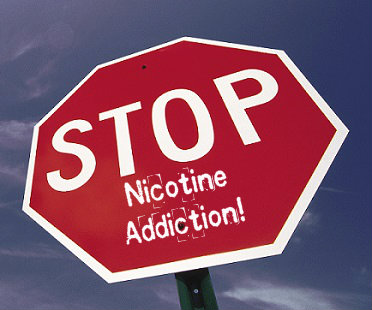 Although tobacco is a widespread and legal substance, quitting it is hard for many of the same reasons that it’s difficult to stop using illegal drugs. Nicotine—the addictive component of cigarettes—releases dopamine in the brain, the neurochemical responsible for the majority of addictions. When the body gets accustomed to it, the external “boost” that smoking provides stops, and this leads to an imbalance in brain chemicals followed by unpleasant symptoms. The problem is compounded by the fact that research indicates “cold turkey” (unsupported) quitting is the most popular method, but is a considerably less successful strategy than counseling, medications and nicotine replacement therapy (like gums or patches). In short, smokers—with an already difficult task ahead of them—often try to quit by themselves, which is statistically the least successful method.
Although tobacco is a widespread and legal substance, quitting it is hard for many of the same reasons that it’s difficult to stop using illegal drugs. Nicotine—the addictive component of cigarettes—releases dopamine in the brain, the neurochemical responsible for the majority of addictions. When the body gets accustomed to it, the external “boost” that smoking provides stops, and this leads to an imbalance in brain chemicals followed by unpleasant symptoms. The problem is compounded by the fact that research indicates “cold turkey” (unsupported) quitting is the most popular method, but is a considerably less successful strategy than counseling, medications and nicotine replacement therapy (like gums or patches). In short, smokers—with an already difficult task ahead of them—often try to quit by themselves, which is statistically the least successful method.
Physical Withdrawal Symptoms Of Nicotine Withdrawal
Like with other drugs, when you stop consuming nicotine you may feel a wide range of physical symptoms. The most common smoking withdrawal symptoms are agitation, irritability, weight gain, depression and anxiety. The negative symptoms come on because the individual is no longer getting the nicotine he’s become dependent on, and the brain knows it, creating cravings in an attempt to make the individual succumb to temptation and give it another hit of nicotine.
Psychological Challenges Of Quitting Smoking
Although the physical withdrawal symptoms add to the discomfort of quitting smoking, the psychological effects are what drive many ex-smokers to relapse. Smoking, like other drug addictions, is a poor coping strategy for dealing with everyday problems, and when these problems return, the individual is at particular risk for relapse. Both internal and external “triggers” to smoke can make the process more difficult, with internal factors including things like stress and depression and external ones including things like being around a friend who smokes or taking a work break that you previously used for smoking. These things push the individual back to smoking, and in combination with the physical withdrawal symptoms, they make the process of quitting extremely challenging.
Benefits Of Initiatives Like STOP
These issues are what make initiatives like STOP so worthwhile. The core selling point of STOP is that attendees receive five weeks’ worth of free nicotine patches, which ordinarily cost around $30 per week, meaning they save around $150. This removes what some see as a financial barrier to getting the support they need, but the support also takes the psychological elements into account. Each qualifying smoker is also eligible to attend workshops and receive ongoing support to help manage triggers and cravings.
This broad range of support contributes to the impressive success rates enjoyed by the initiative. Oxford County’s tobacco control coordinator Dominique Bruce points out that those in the program have a quit rate that’s 50 percent higher than those not in the program. She also points to the cost savings and psychological support offered by the program. “If you slip up, you need to remember it’s just a slip up, not a fail,” Bruce said.
The Right Way To Help People Quit Smoking
There are many lessons that can be learned from programs like STOP, and although this initiative is in Canada, U.S.-based stop smoking initiatives can take a cue from the approach and work to reduce the preventable diseases and deaths caused by smoking. The smokers themselves face the biggest challenges, but with the right support and the guidance to help them push through the difficult periods, they have the ability to kick their tobacco addiction for good. As long as we understand the challenges inherent in quitting smoking—or kicking any addiction—we can find the compassion to help those in need and the wisdom to do so in the most effective way possible.


